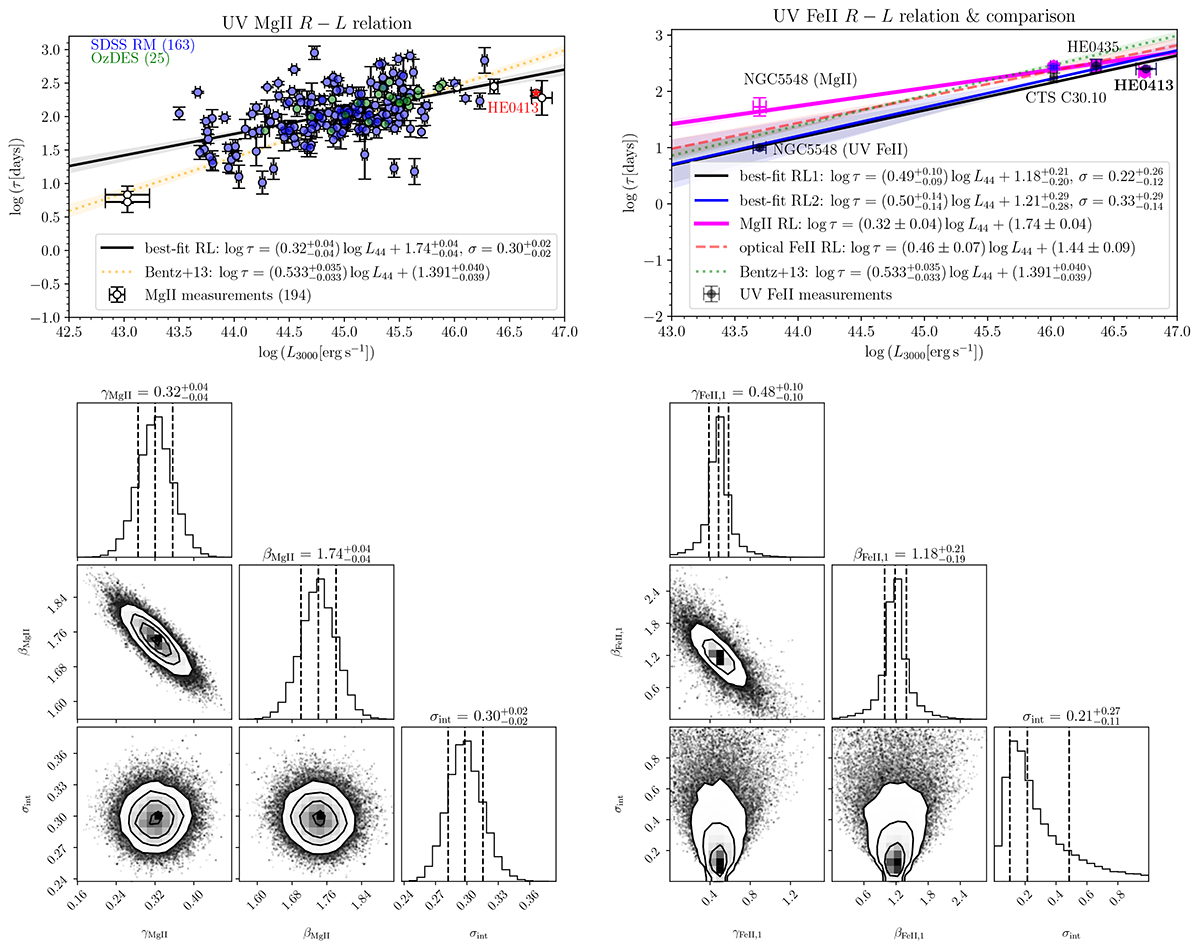Fig. 10.

Download original image
Position of HE 0413−4031 in the UV MgII and FeII R − L relations. Upper panels: MgII R − L relation (left panel) constructed from 194 measurements (163 SDSS RM, 25 OzDES, and six other sources including HE 0413−4031). The best-fitted relation is in the legend. For comparison, we also include the Hβ relation (Bentz et al. 2013) recalculated for 3000 Å (dashed orange line). In the right panel, we show the UV FeII R − L relation based on four RM measurements for NGC 5548, CTS C30.10, HE 0435−4312, and HE 0413−4031 (two comparable relations are plotted by solid black and dashed blue lines since there were two plausible FeII time delays for CTS C30.10). The UV FeII relation is steeper and lower than the flatter and higher MgII R − L relation, which results in the convergence and their intersection towards higher luminosity sources. In the right panel, we also show for comparison the optical FeII relation inferred by Prince et al. (2023) from multiple measurements as well as the HβR − L relation by Bentz et al. (2013) that are depicted by dashed red and green lines, respectively. Lower panels: One-dimensional confidence histograms and two-dimensional confidence contours for the searched parameters (slope γ, intercept β, and the intrinsic scatter σint) of the UV MgII R − L relation (left panel) and of the UV FeII R − L relation (right panel). For the UV FeII R − L relation, we show the case with a smaller scatter, and hence the smaller FeII time delay of CTS C30.10.
Current usage metrics show cumulative count of Article Views (full-text article views including HTML views, PDF and ePub downloads, according to the available data) and Abstracts Views on Vision4Press platform.
Data correspond to usage on the plateform after 2015. The current usage metrics is available 48-96 hours after online publication and is updated daily on week days.
Initial download of the metrics may take a while.


